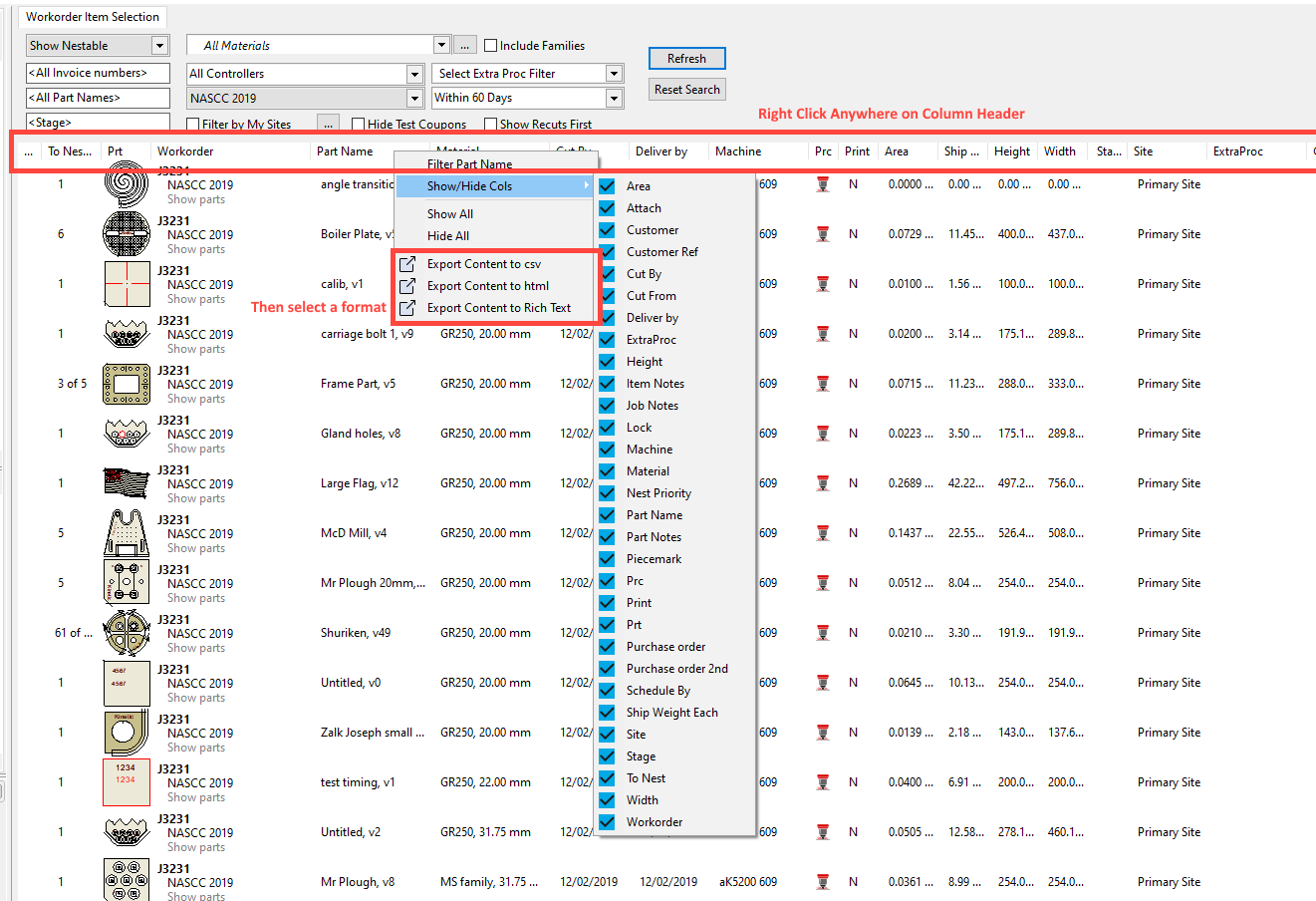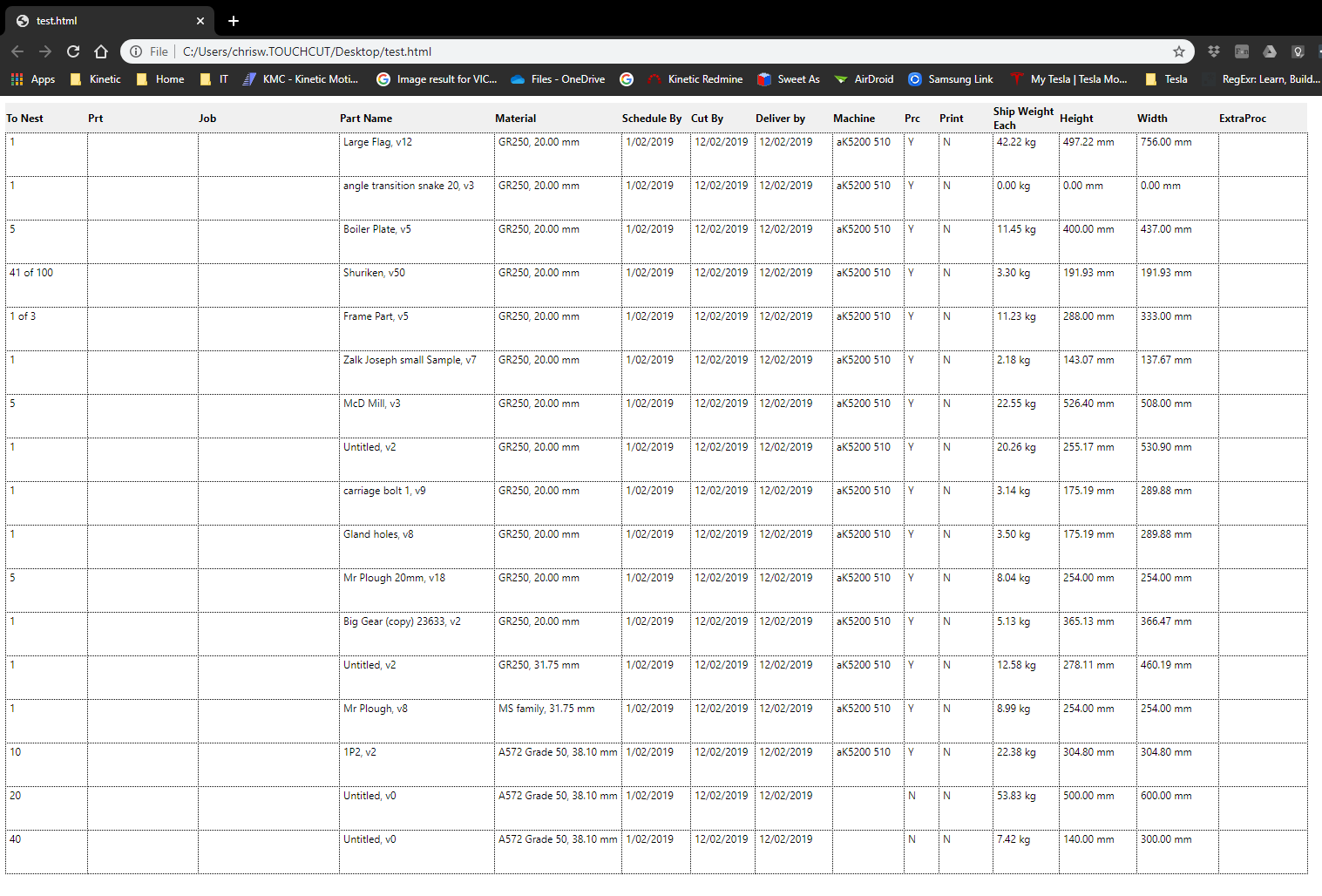In many places in primecut you can get a tabular list of items, with columns showing detailed information. As of primecutNE ver4.5.502, you can now export all the data in the view to:
•CSV: CSV files (comma separated values) are a simplified spreadsheet format and can be viewed with text editors and most spreadsheet applications such as Microsoft Excel. Useful if external manipulation of the data (eg additional sorting, filtering, or calculations) is required.
•HTML: An HTML file is a file encoded in the same way as a web page, and is viewable by web browsers. It provides an attractive output similar to what is displayed onscreen, useful for printing, but less useful if you want to manipulate the data.
•RTF: Rich Text Format is a simple word processing standard, allowing text formatting. Its output is similar to the html insofar as it it contains some of the onscreen formatting, and is thus useful for printing, but it is also relatively easy to edit in a textual manner.
Not everything in the grid will be exported. In particular graphical items such as icons or part or plate pictures (metafiles) are excluded.
All rows will be exported (row filtering will not be applied to the export), see
To export a currently displayed table, right click on its header columns and from the popup menu select one of the export options, then select a file location to save to. Primecut will then pass the file to the operating system to open as it sees best (default programs). Not that from the same menu you can show or hide columns; this affects the onscreen display as well as the exported result. You can also move and resize columns on the screen display before you export (especially to rtf or html) so the export is formatted "nicely" for your needs.
Example
A manager asks for a list of parts waiting to be nested for a customer called "NASCC 2019 St Louis". We may have a report for this already, but if not we can simply go into nesting, setup the filters to show all parts for that customer to be nested, hit Refresh and the export. Additionally we can setup the columns we require, as well as their size and order.
Triggering the Export

CSV Export Result
(as displayed in Microsoft Excel for Office 365).
All rows are exported not just those currently scrolled into view.
The part images in the Prt column have been lost in the export. The "part has processing" icons have also been lost but have been replaced with Y or N characters.
Note that due to differing font sizes, some columns appeared initially as "####" in Excel, as the Excel columns were too narrow for their content, so some column resizing was done in Excel to achieve this display. Handy Tip: To resize all the column widths, select all (ctrl-A) then double click on any column splitter; this causes all the columns to auto-size to fit their contents.

HTML Export Result
(As displayed in Google Chrome). This form of export is generally the closest visually to what was on screen and may include some text coloring and highlighting.
 ]
]
Rich Text Export Result
(as displayed in Microsoft Word).
If there are too many columns you may need to change the page orientation or size.
